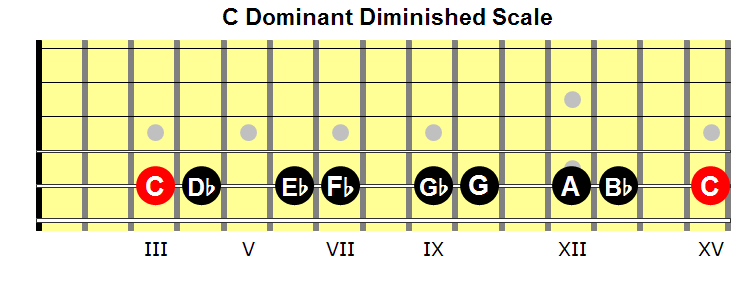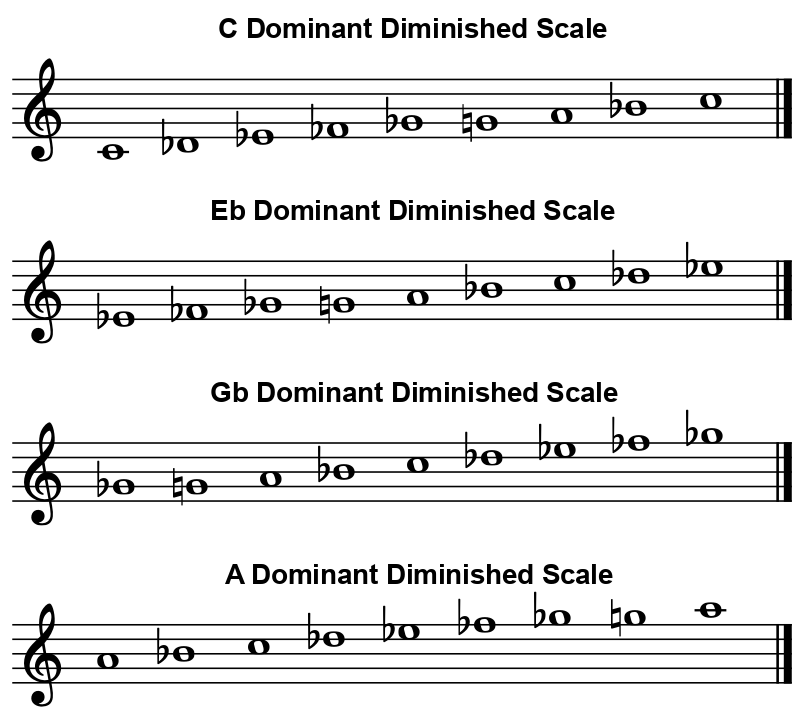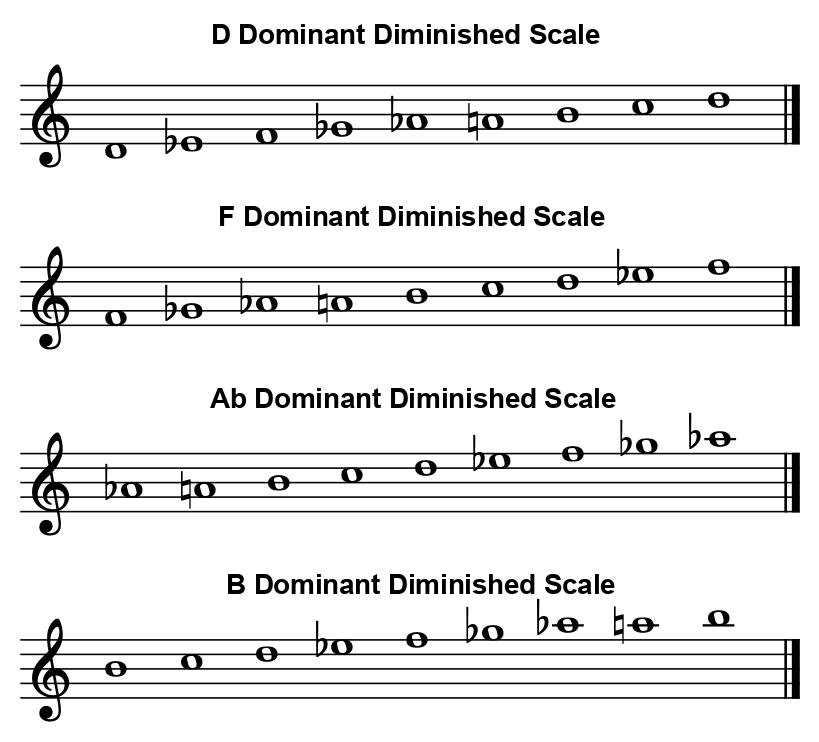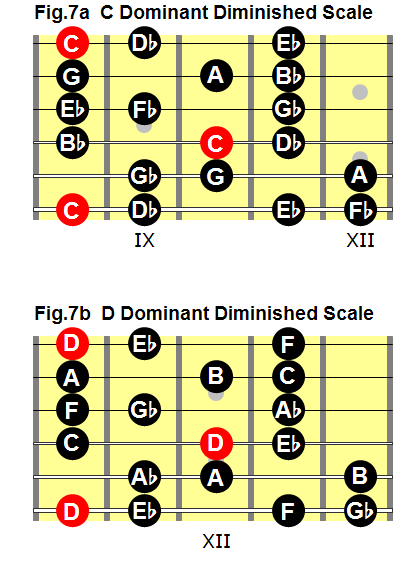The dominant diminished scale is an eight-note, symmetrical scale with an interval pattern that alternates between half steps and whole steps.
The scale starts with a half step and has an interval pattern of H W H W H W H W.
This post will analyze the dominant diminished scale. It will also provide a common fingering for the scale, along with instruction on how to play it on a guitar with any root note.
Constructing a Dominant Diminished Scale
We can construct a dominant diminished scale by starting on any note and alternating half steps and whole steps from there.
For example, if we start a dominant diminished scale on a C, the scale would contain the notes C, Db, Eb, Fb, Gb, G, A and Bb.
Fig.1 shows a C dominant diminished scale.
Fig.1

It is easy to see the pattern of half steps and whole steps if we play the scale on one string on a guitar (fig.2).
Fig.2

Enharmonic Equivalent Dominant Diminished Scales
There are really only three different dominant diminished scales:
- The C dominant diminished scale.
- The C# dominant diminished scale.
- The D dominant diminished scale.
All of the other dominant diminished scales are enharmonic equivalents of one of those three scales.
C Dominant Diminished Scale
The following four dominant diminished scales are enharmonic equivalents of one another:
- C dominant diminished scale.
- Eb dominant diminished scale.
- Gb dominant diminished scale.
- A dominant diminished scale.
All four scales contain the same notes.
Fig.3 shows the four enharmonic equivalent scales.
Fig.3

C# Dominant Diminished Scale
The following four dominant diminished scales are enharmonic equivalents of one another:
- C# dominant diminished scale.
- E dominant diminished scale.
- G dominant diminished scale.
- Bb dominant diminished scale.
All four scales contain the same notes.
Fig.4 shows the four enharmonic equivalent scales.
Fig.4

D Dominant Diminished Scale
The following four dominant diminished scales are enharmonic equivalents of one another:
- D dominant diminished scale.
- F dominant diminished scale.
- Ab dominant diminished scale.
- B dominant diminished scale.
All four scales contain the same notes.
Fig.5 shows the four enharmonic equivalent scales.
Fig.5

Dominant Diminished Scales on a Guitar
Fig.6 shows a common fingering for a dominant diminished scale.
Fig.6

This fingering will allow you to play a dominant diminished scale starting on any note:
- To play a C dominant diminished scale, start the pattern on the C on the sixth string, eighth fret (fig.7a).
- To play a D dominant diminished scale, start the pattern on the D on the sixth string, 10th fret (fig.7b).
Fig.7

Soloing Application
The dominant diminished scale is used to solo over altered dominant chords with the same root note, specifically those with an altered ninth or sharped 11th scale degree.
The scale can also be used to solo over dominant 13th chords with the same root note.
For example, a C dominant diminished scale can be used to solo over the chords C7(b9), C7(#9), C7(#11) and C13.
Fig.8 shows that the notes in the chords are all included in the scale.
Some of the notes in the scale have been renamed enharmonically to match the correct spelling of the chords. The scale degrees are labeled beneath the notes.
Fig.8


Related Posts
Related posts include:
